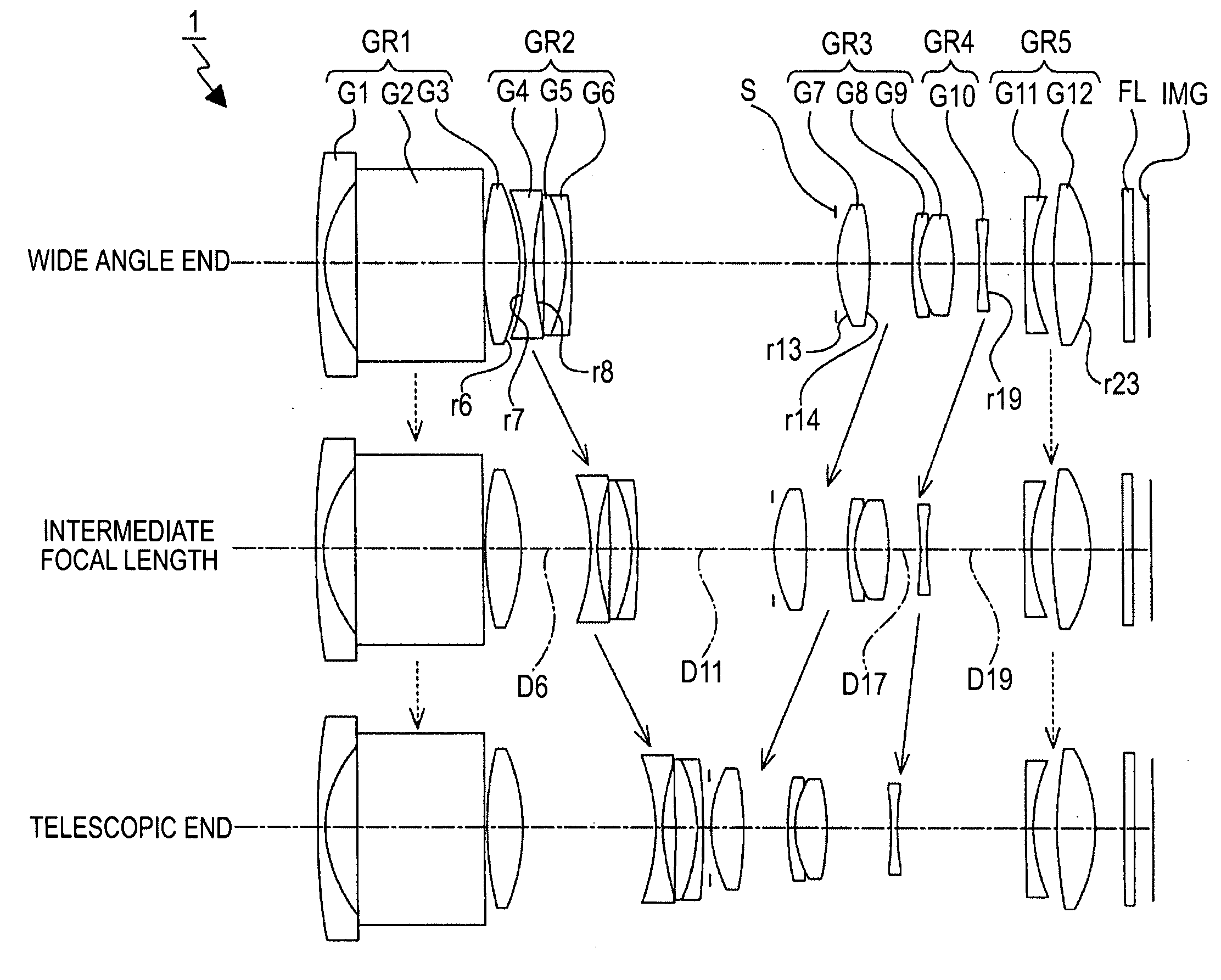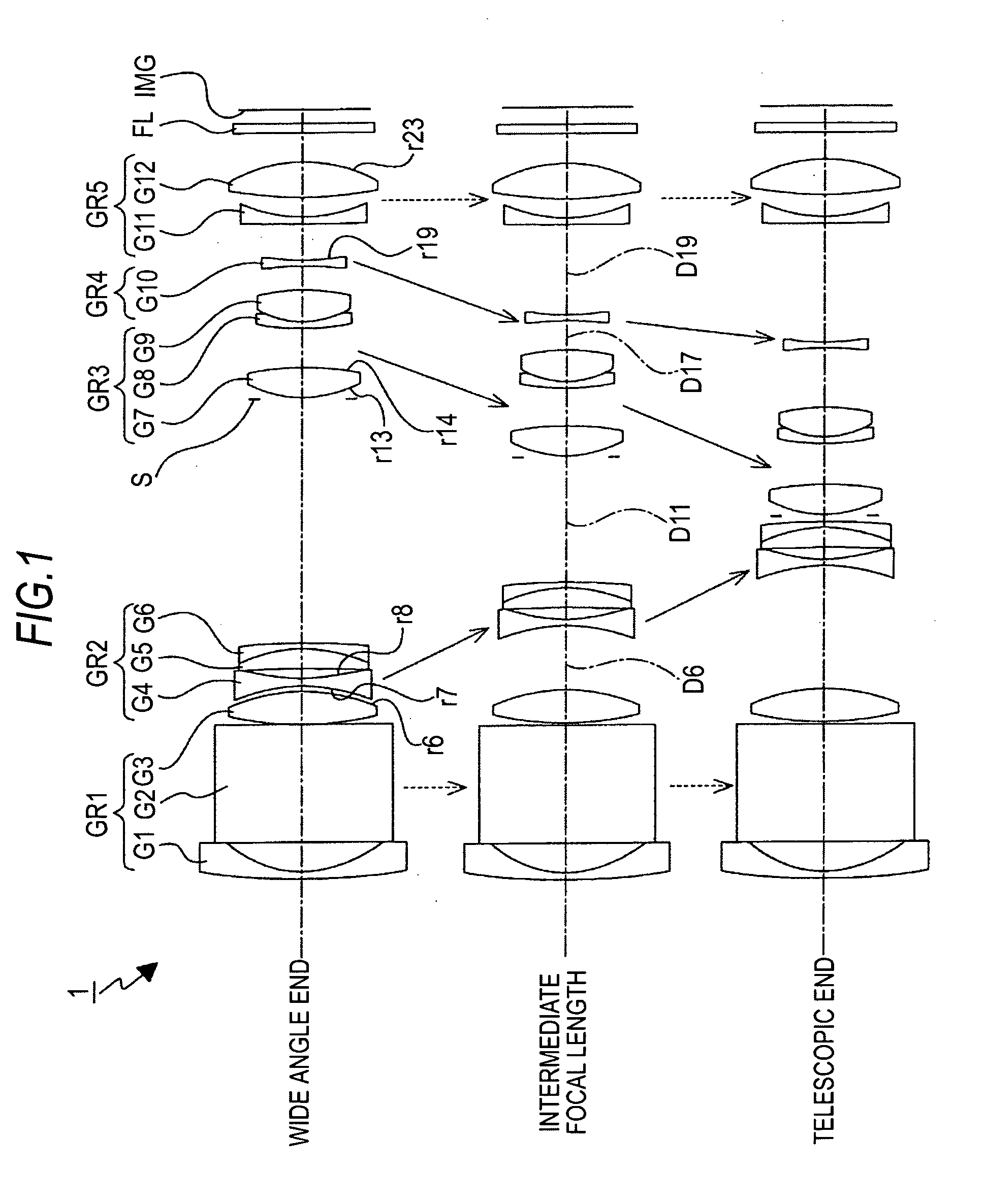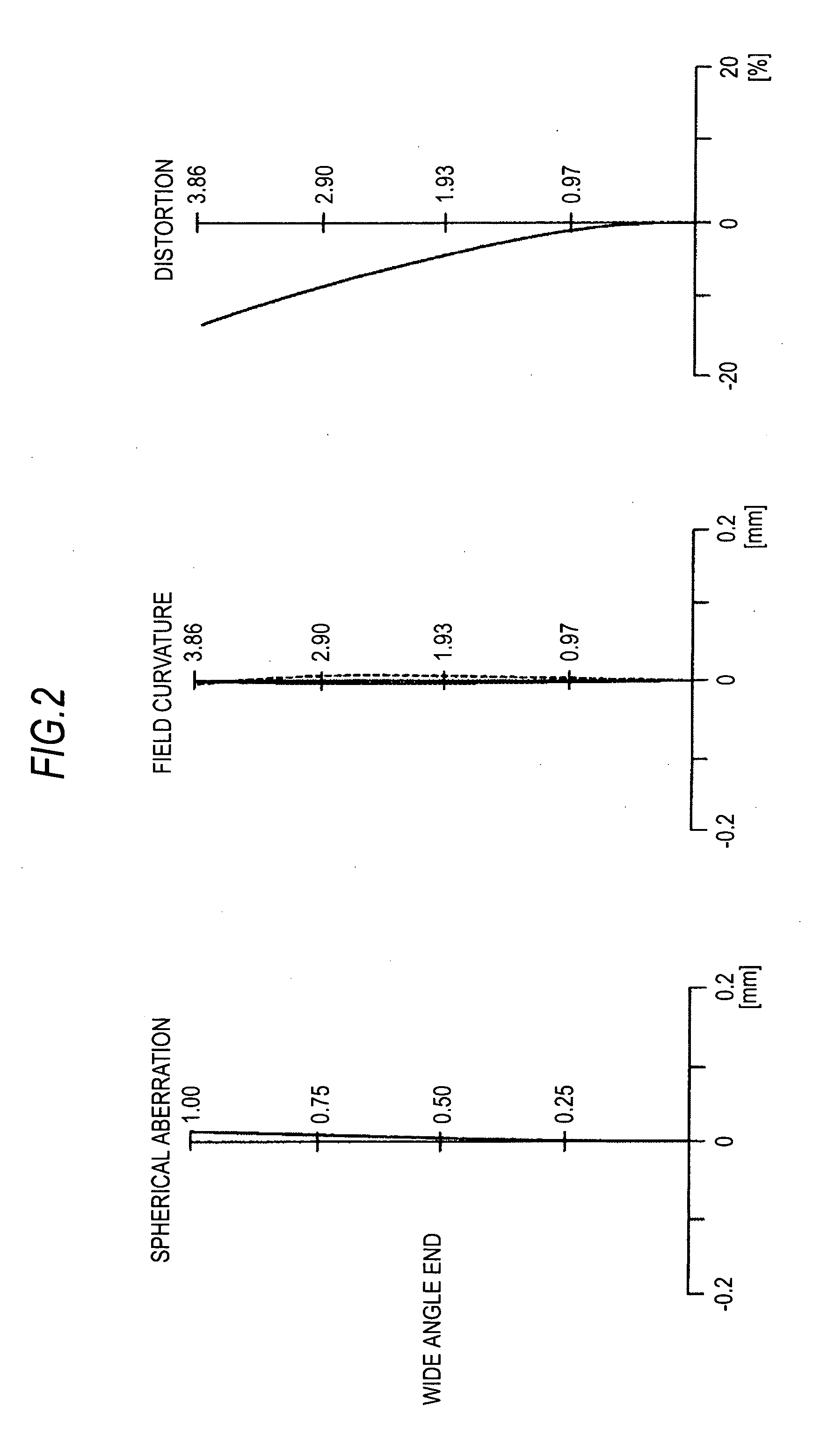Zoom lens and imaging apparatus
a zoom lens and zoom technology, applied in the field of zoom lens and imaging apparatus, can solve the problems of reducing the size of the zoom lens, reducing the diameter of the lens, and affecting the magnification of the second lens group, so as to achieve a well balanced manner, simplify the barrel configuration, and reduce the size of the optical system
- Summary
- Abstract
- Description
- Claims
- Application Information
AI Technical Summary
Benefits of technology
Problems solved by technology
Method used
Image
Examples
first example
[0156]FIG. 1 shows the lens configuration of a zoom lens 1 in First Example of the invention.
[0157]The zoom lens 1 includes a first lens group GR1 having positive refracting power, a second lens group GR2 having negative refracting power, a third lens group GR3 having positive refracting power, a fourth lens group GR4 having negative refracting power, and a fifth lens group GR5 having positive refracting power arranged in this order from the object side toward the image side.
[0158]The zoom lens 1 has a variable power ratio of 5.5.
[0159]The first lens group GR1 is formed of a negative meniscus lens G1 with a convex surface facing the object side, a rectangular prism G2 used as a reflection member for deflecting the optical path by 90 degrees, and a positive biconvex lens G3 arranged in this order from the object side toward the image side.
[0160]The second lens group GR2 is formed of a negative biconcave lens G4 and a doublet obtained by bonding a positive meniscus lens G5 with a conv...
second example
[0175]FIG. 5 shows the lens configuration of a zoom lens 2 in Second Example of the invention.
[0176]The zoom lens 2 includes a first lens group GR1 having positive refracting power, a second lens group GR2 having negative refracting power, a third lens group GR3 having positive refracting power, a fourth lens group GR4 having negative refracting power, and a fifth lens group GR5 having positive refracting power arranged in this order from the object side toward the image side.
[0177]The zoom lens 2 has a variable power ratio of 6.4.
[0178]The first lens group GR1 is formed of a negative meniscus lens G1 with a convex surface facing the object side, a rectangular prism G2 used as a reflection member for deflecting the optical path by 90 degrees, and a positive biconvex lens G3 arranged in this order from the object side toward the image side.
[0179]The second lens group GR2 is formed of a negative biconcave lens G4, a positive biconvex lens G5, and a negative meniscus lens G6 with a con...
third example
[0193]FIG. 9 shows the lens configuration of a zoom lens 3 in Third Example of the invention.
[0194]The zoom lens 3 includes a first lens group GR1 having positive refracting power, a second lens group GR2 having negative refracting power, a third lens group GR3 having positive refracting power, a fourth lens group GR4 having positive refracting power, a fifth lens group GR5 having negative refracting power, and a sixth lens group GR6 having positive refracting power arranged in this order from the object side toward the image side.
[0195]The zoom lens 3 has a variable power ratio of 5.5.
[0196]The first lens group GR1 is formed of a negative meniscus lens. G1 with a convex surface facing the object side, a rectangular prism G2 used as a reflection member for deflecting the optical path by 90 degrees, and a positive biconvex lens G3 arranged in this order from the object side toward the image side.
[0197]The second lens group GR2 is formed of a negative biconcave lens G4, a positive men...
PUM
 Login to View More
Login to View More Abstract
Description
Claims
Application Information
 Login to View More
Login to View More - R&D
- Intellectual Property
- Life Sciences
- Materials
- Tech Scout
- Unparalleled Data Quality
- Higher Quality Content
- 60% Fewer Hallucinations
Browse by: Latest US Patents, China's latest patents, Technical Efficacy Thesaurus, Application Domain, Technology Topic, Popular Technical Reports.
© 2025 PatSnap. All rights reserved.Legal|Privacy policy|Modern Slavery Act Transparency Statement|Sitemap|About US| Contact US: help@patsnap.com



